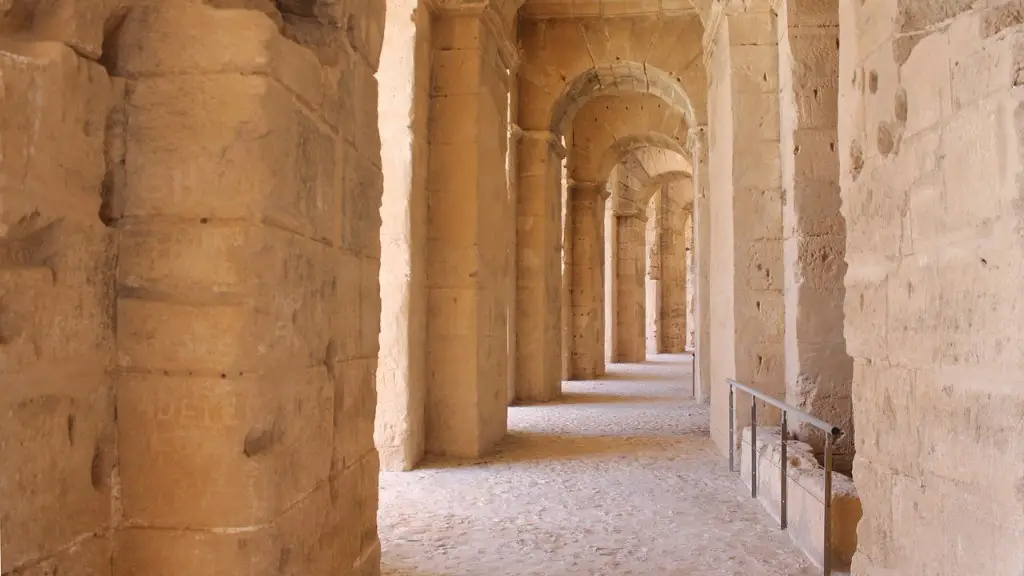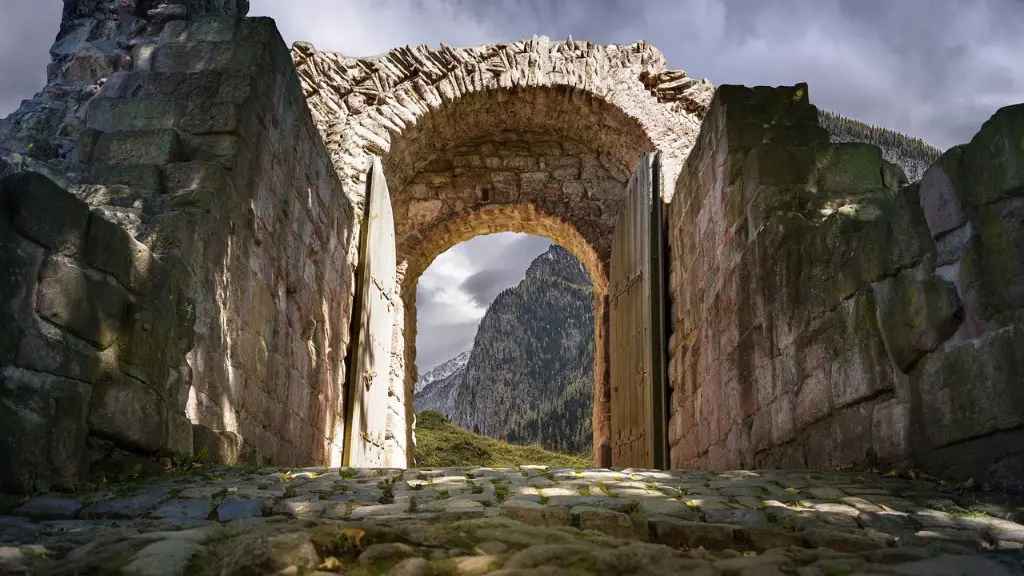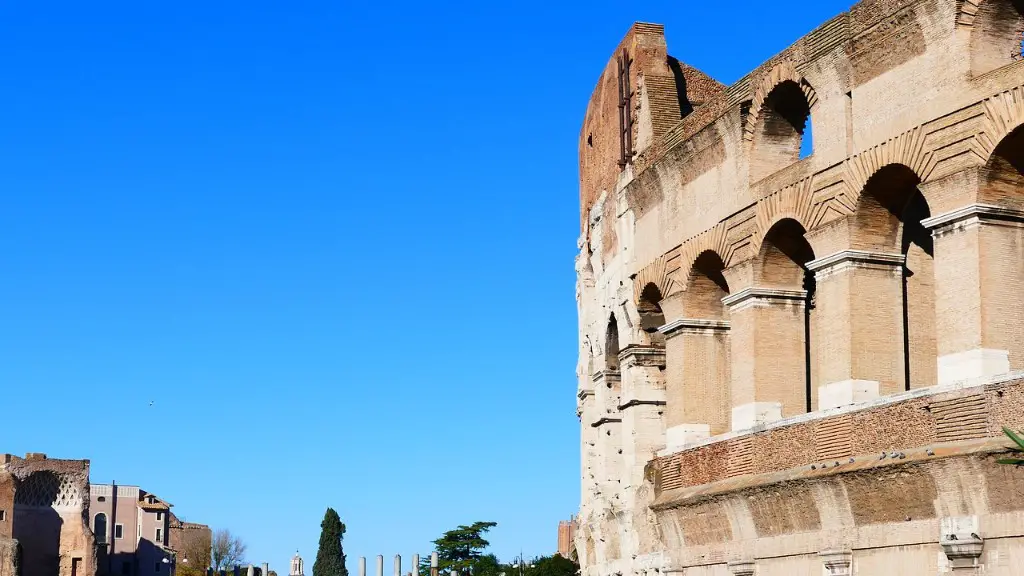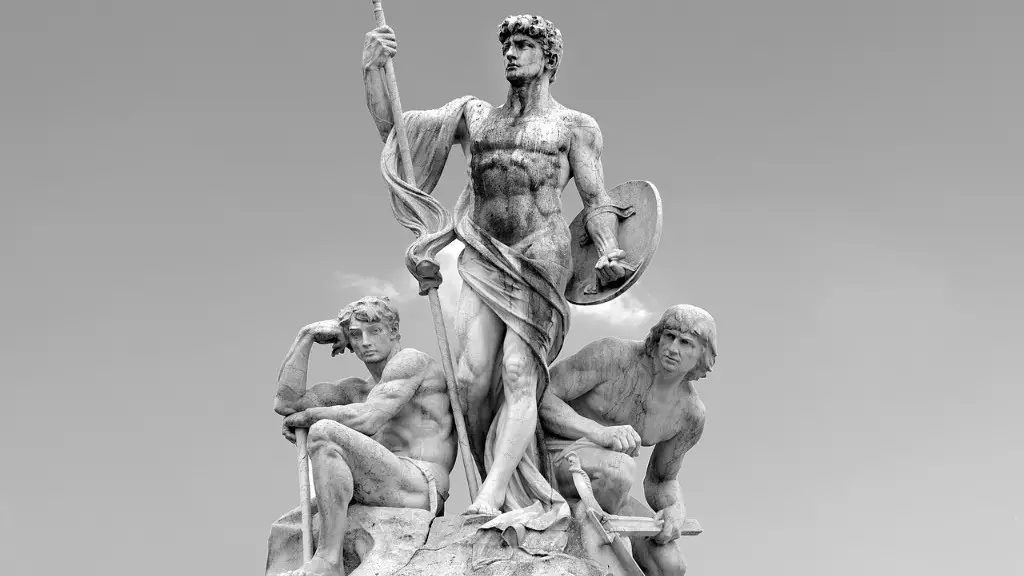In ancient Rome, the cityscape was dominated by the skyline of the seven hills. The Tiber River ran through the center of the city, and the ruins of the Forum and Coliseum still stand today as a testament to the grandeur of the empire.
The ancient city of Rome was situated on seven hills at the junction of the Tiber and Aniene rivers in central Italy. The city was originally founded as a village in the 8th century BCE. It grew into a rich and powerful city during the period of the Roman Republic (c.509-27 BCE), became an even greater imperial power during the Roman Empire (27 BCE – 476 CE), and finally declined and fell during the late empire and into the Early Middle Ages (476-1000 CE). The city was renowned for its grandiose architecture, like the Colosseum, Pantheon, and Roman Forum, among many others.
What race were the original Romans?
The Latins were one of the most important groups of people in the early Roman Empire. They were a people with a marked Mediterranean character, related to other neighbouring Italic peoples such as the Falisci. The Latins were instrumental in the rise of Rome as a major power in the Mediterranean region.
As a result of the lack of evidence, it is impossible to know the skin pigmentation of most ancient Romans. However, the lack of evidence has allowed the assumption that most prominent Romans were, in our terms, white.
What did the average ancient Roman look like
The ancient Romans were a people of Mediterranean descent, with dark hair and eyes. They typically had a tan or olive skin complexion. Men were clean-shaven and had short hair, while women had longer hair that was often styled in various ways.
The economic status of a person in a Roman city dictated their daily life. The wealthy had the benefit of slave labor for tasks such as heating water at the baths, serving evening meals, and educating children. The city was a mixture of wealth and poverty, often existing side by side.
Are there still descendants of Romans?
There are many Italians alive today who are directly descended from people who lived in Italy during the Roman era. However, most of them will have some admixture from other European peoples too. This is due to the fact that Italy has been invaded and settled by many different peoples over the centuries.
The Roman Empire was a major political and cultural force in the Western and Eastern worlds for over one thousand years. The Vikings were a smaller, but equally influential, group who carved out a place for themselves in Northern Europe. Though the two groups were separated by time and geography, they shared some similarities in their cultures and religions.
What DNA were the Romans?
A new DNA study has revealed that the inhabitants of ancient Rome were genetically similar to the populations of the Eastern Mediterranean and Middle East. This is believed to be due to the fact that the Roman Empire was at the height of its power during this period. The study also found that the Roman genetic makeup changed over time, becoming more similar to that of the European populations.
In AD 193, Lucius Septimius Severus was named ruler of the Roman Empire and in doing so became Rome’s first African Emperor. After emerging victorious from a period of civil war, Severus expanded the border of the empire to new heights, ushered in a period of imperial transformation and founded a dynasty. A great military commander, Severus put down several rebellions and initiated a series of campaigns that increased Roman territory. He also reformed the government, introducing new policies that helped to stabilize the empire. Under Severus, the Roman Empire reached its greatest extent and enjoyed a period of prosperity. However, his reign was also marked by increased civil unrest and violence.
What skin color was the Romans
There is evidence that the Romans had a wide range of skin tones, from light brown to pale skin. This is thought to be due to the large amount of diversity within the Roman Empire. There were many different cultures and ethnic groups represented, so it is not surprising that there was a wide range of skin tones.
The average height of ancient Romans was shorter than today’s average height. Around 5’5″, ancient Romans were shorter than today’s average height by around 2 inches. This is due to a number of factors, including diet and lifestyle.
Were Romans short or tall?
The average height of ancient male Romans ranged from 5′4″ to 5′7″. They were most likely very strong for their heights; eg, marching long distances with heavy armor and supplies.
This relief from Neumagen in Germany, dating to around 200 AD, shows the kind of woman that the Romans aspired to. She is shown with her servant, who is attended to by another servant. The woman is well-dressed and obviously of high status, while the servants are more modestly dressed and subservient. This relief illustrates the different roles of mistresses and servants in Roman society.
What time did Romans wake up
The average Roman day was structured around the concept of work and leisure. The work day began before dawn and ended by noon, at which point the afternoon would be free for leisure activities like swimming or exercising. In the evening, Romans would gather for dinner parties that could last well into the night. This daily routine allowed for a good balance between work and play, and was an important part of Roman culture.
Longevity has increased steadily through history. Life expectancy at birth was a brief 25 years during the Roman Empire, it reached 33 years by the Middle Ages and raised up to 55 years in the early 1900s. In the past century, life expectancy has increased rapidly in developed countries, reaching 70-80 years; in some developed countries, life expectancy is now over 80 years. This increase in life expectancy is due to improved living conditions, advances in medicine and nutrition, and improvements in public health.
What did Romans sleep on?
The ancient Romans were very stratified in their society, and this is reflected in their beds. The wealthier citizens slept on raised beds made of metal, with woven metal supports to hold the feather or straw-stuffed mattress. This would have been a very comfortable and luxurious way to sleep. Less-wealthy people had similar beds made from wood, with wool strings holding up the mattress. This would have been much less comfortable, but would still have been a step up from sleeping on the ground.
The vast majority of Roman slaves were actually from Greece. This is because of the numerous wars between the two countries, and because Rome often won these wars. The first great influx of Greek slaves into Rome occurred after the Roman victory at the Battle of Pydna in 168 BC.
Conclusion
There is no one answer to this question as Ancient Rome was a large and varied cityscape. However, we do know that it was a bustling metropolis with a mix of residential, commercial, and religious buildings. It is thought that the city was brightly lit at night by oil lamps and that the streets were lined with shops and stalls. The ancient Romans also had a complex system of aqueducts and sewers, which helped to keep the city clean.
The ancient city of Rome was a beautiful site. The city was full of magnificent buildings and great works of art. The people of Rome were proud of their city and worked hard to keep it clean and well-organized. Rome was a safe and orderly place to live.





